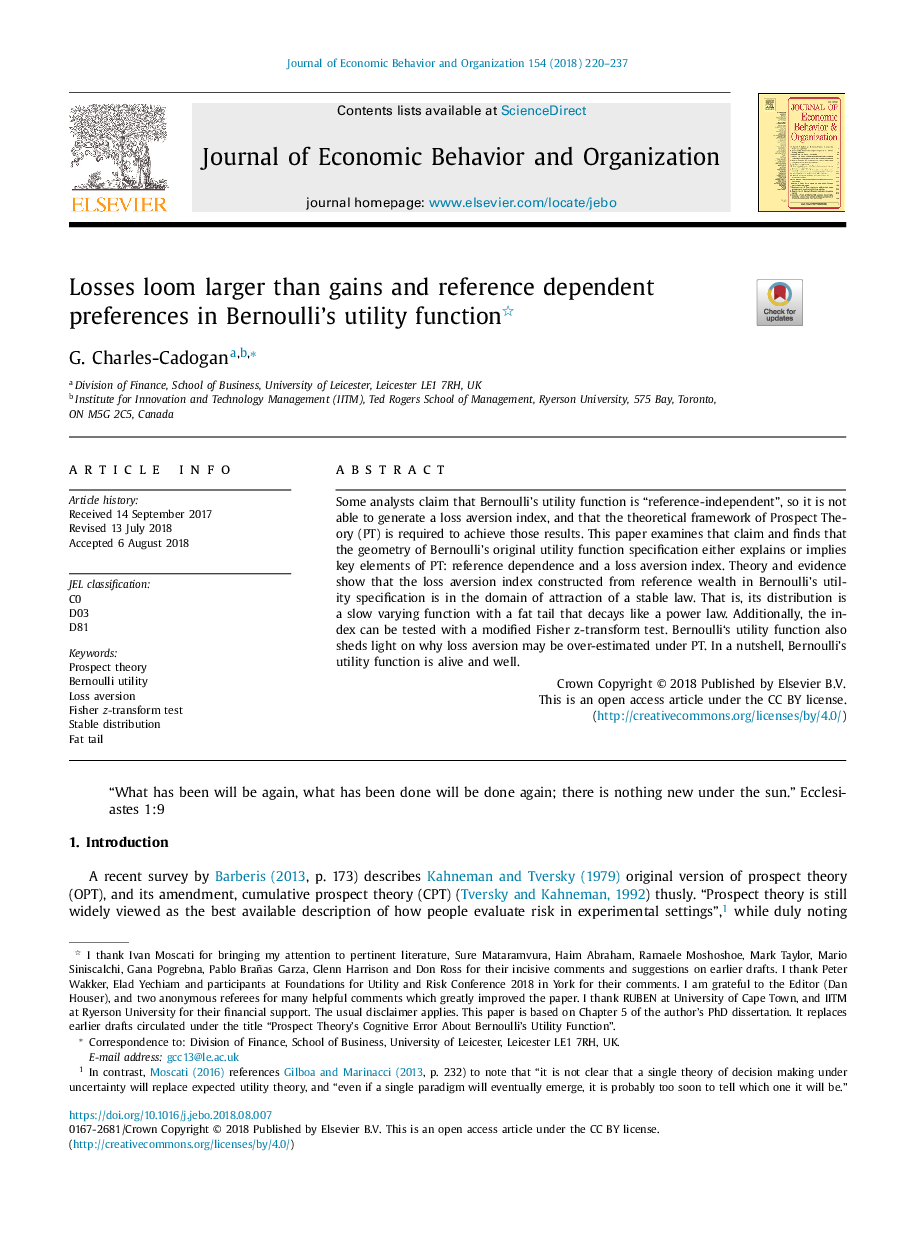| Article ID | Journal | Published Year | Pages | File Type |
|---|---|---|---|---|
| 10127600 | Journal of Economic Behavior & Organization | 2018 | 18 Pages |
Abstract
Some analysts claim that Bernoulli's utility function is “reference-independent”, so it is not able to generate a loss aversion index, and that the theoretical framework of Prospect Theory (PT) is required to achieve those results. This paper examines that claim and finds that the geometry of Bernoulli's original utility function specification either explains or implies key elements of PT: reference dependence and a loss aversion index. Theory and evidence show that the loss aversion index constructed from reference wealth in Bernoulli's utility specification is in the domain of attraction of a stable law. That is, its distribution is a slow varying function with a fat tail that decays like a power law. Additionally, the index can be tested with a modified Fisher z-transform test. Bernoulli's utility function also sheds light on why loss aversion may be over-estimated under PT. In a nutshell, Bernoulli's utility function is alive and well.
Related Topics
Social Sciences and Humanities
Economics, Econometrics and Finance
Economics and Econometrics
Authors
G. Charles-Cadogan,
